Samsung Q60A vs TCL 6-Series: Which should you buy?
Two great QLED TVs square off in a head-to-head matchup.
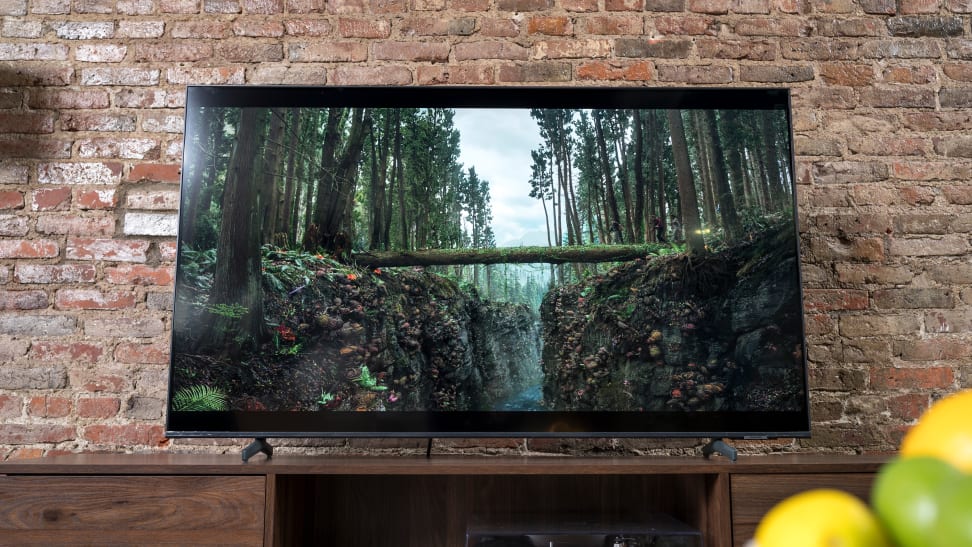 Credit:
Reviewed / Jackson Ruckar
Credit:
Reviewed / Jackson Ruckar
Products are chosen independently by our editors. Purchases made through our links may earn us a commission.
You can find some serious bargains on TVs under $500 these days, but sometimes it’s worth it to spend a little more. There are several fantastic TVs available in the next highest price bracket, and nearly all of them offer better performance and more features than the most affordable sets.
Two such options are the Samsung Q60A (2021) and the TCL 6-Series (2020); they aren’t as affordable as some competitors, but make up for it with improved 4K/HDR performance and future-facing features. Despite many similarities, the Samsung Q60A and the TCL 6-Series are very different TVs, each with its own benefits and drawbacks. To find out which is the better pick for you, we’re putting them head to head.
Buy the TCL 6-Series at Best Buy
Buy the Samsung Q60A at Best Buy
Price
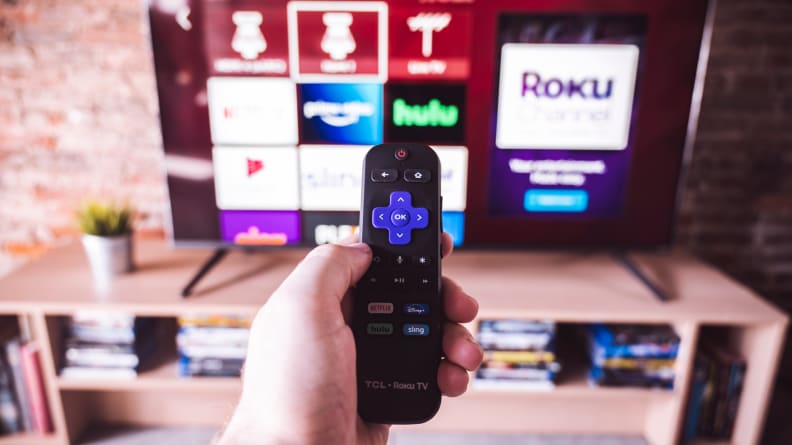
The Roku-powered TCL 6-Series (seen here) is available in three sizes, while the Samsung Q60A is available in eight.
The Samsung Q60A is available in a total of eight sizes ranging from 43 inches all the way up to 85 inches. Since the series’ initial release, several of the Q60A models have gone down in price. Here’s how the series currently shakes out.
Samsung Q60A:
- 43-inch (Samsung QN43Q60A), MSRP $579.99
- 50-inch (Samsung QN50Q60A), MSRP $679.99
- 55-inch (Samsung QN55Q60A), MSRP $849.99
- 60-inch (Samsung QN60Q60A), MSRP $949.99
- 65-inch (Samsung QN65Q60A), MSRP $1,099.99
- 70-inch (Samsung QN70Q60A), MSRP $1,249.99
- 75-inch (Samsung QN75Q60A), MSRP $1,399.99
- 85-inch (Samsung QN85Q60A), MSRP $2,799.99
The TCL 6-Series, on the other hand, is only available in three size options, all of which are pretty big. Like several TVs in the last calendar year, the 6-Series has seen a significant price hike, most likely due to supply chain issues and increased manufacturing costs. Below you’ll find the current pricing.
TCL 6-Series:
- 55-inch (TCL 55R635), MSRP $949.99
- 65-inch (TCL 65R635), MSRP $1,299.99
- 75-inch (TCL 75R635), MSRP $1,799.99
Not only are the Q60A prices lower across the board, but Samsung is offering far more size options to choose from.
Our pick: Samsung Q60A
Design
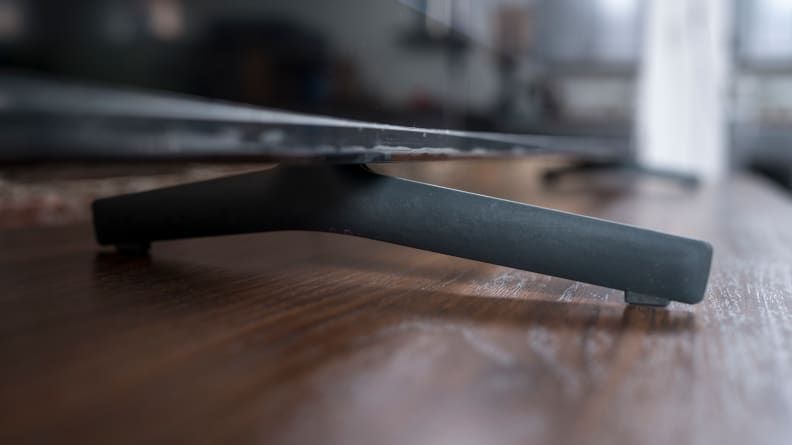
The Q60A's angular feet keep the panel close to whatever surface it lives on. Overall, we like the look of the Q60A more than the 6-Series.
Being on the upper end of the mid-range price spectrum, both the Q60A and the 6-Series look better than most budget-friendly options on the market today. The Q60A’s relatively thin panel features narrow, charcoal-colored bezels, and it’s propped up on two feet placed close to its corners. The texture of the panel’s exterior resembles brushed metal, giving it an air of sophistication.
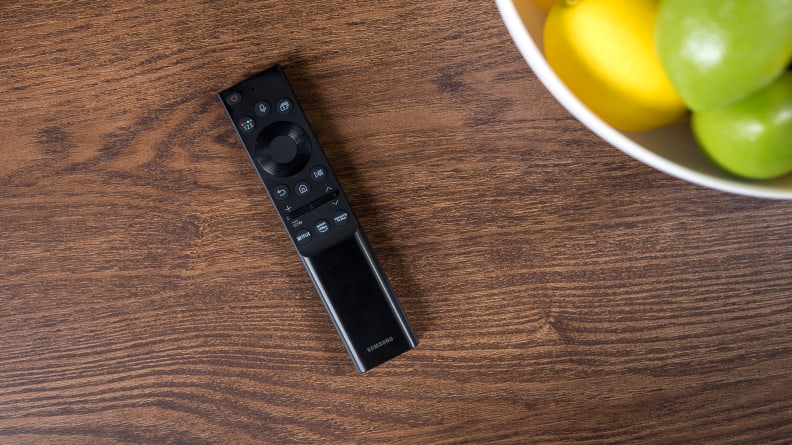
Samsung's all-new, eco-friendly Solar Cell remote control is a breath of fresh air, as it allows you to ditch disposable batteries in favor of natural and indoor light. Alternatively, you can charge the remote via USB.
The Q60A’s feet are angled in such a way that the panel sits closer to the tabletop than most TVs that use a feet-style stand apparatus. Despite the low-riding look, there’s still enough vertical room to accommodate a slim soundbar. Another shoutout-worthy design element is the Q60A’s eco-friendly Solar Remote, which ditches the disposable batteries and charges via indoor or outdoor light. Alternatively, you can charge the Solar Remote via USB.
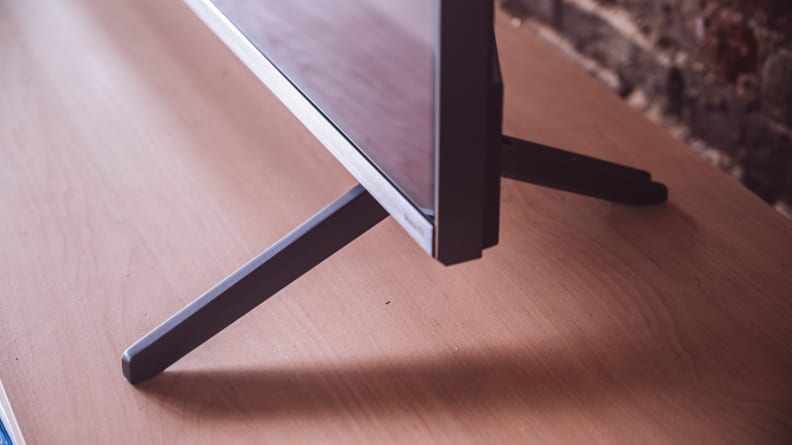
The 6-Series angular feet—seen here—are more pronounced than those of the Samsung Q60A.
The 6-Series, on the other hand, is not as thin as the Q60A, and trades the Q60A’s rounded-off edges for sharp angles. In fact, the 6-Series is downright chunky-looking next to the svelte, sleek presence of the Q60A. Its panel also sits atop two wide-set, angular feet, but the feet of the 6-Series are angled slightly differently and jut out further from the display.
In my review of the TCL 6-Series, I characterized the 6-Series design as "sturdy, but not swanky.” It’s not a poorly designed TV by any means, but the Q60A is the better-looking of the two.
Our pick: Samsung Q60A
Features and smart platform

Samsung's Tizen-based smart platform (seen here) isn't quite as user-friendly as Roku, and overall, the Q60A doesn't offer as many extra enhancements as the 6-Series.
Here's a quick snapshot of the baseline features shared by both of these TVs:
- 4K resolution
- Quantum-dot color
- HDR (HDR10, HLG)
- eARC
- Auto Low Latency Mode (ALLM)
- Google Assistant, Amazon Alexa, Apple AirPlay 2
The relatively short list of shared features should not be interpreted as either set lacking extras, as both models offer various bells and whistles that the other does not.
While both TVs support HDR for improved brightness and color volume with supported content, the 6-Series is compatible with Dolby Vision, which is arguably the best HDR format. While Samsung TVs aren’t Dolby Vision-compatible, the Q60A does get you HDR10+, a dynamic metadata version of the HDR10 format often considered to be Dolby Vision’s closest competitor.
The 6-Series also features a refresh rate of 120Hz compared to the Q60A’s 60Hz refresh rate, which makes it better equipped to handle motion. That said, despite its 4K resolution, 6-Series owners hoping to enjoy 120fps content should be aware of the fact that the 6-Series can only play 120fps content at a maximum resolution of 1440p, not 4K.
When it comes to gaming, both TVs offer Auto Low Latency Mode (ALLM), which automatically initiates game-optimized settings whenever a console is detected. However, while the 6-Series offers Variable Refresh Rate (VRR), the Q60A does not. For folks who do a fair amount of gaming, VRR is quite the catch, as it prevents screen tearing and limits visual artifacts during fast-paced gameplay.
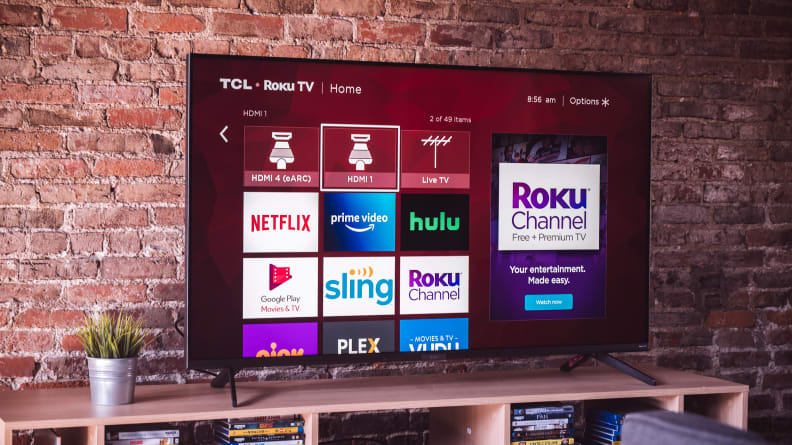
In addition to its 120Hz refresh rate and its VRR support, the 6-Series (seen here) is also equipped with our favorite smart platform: Roku.
Both are smart TVs: Samsung’s Tizen-based smart platform is baked into the Q60A’s software and the 6-Series comes equipped with Roku. Essentially, with the 6-Series, pretty much everything you’d find in a Roku device is right at your fingertips. While Samsung’s zippy smart platform offers plenty of flexibility, we prefer the bold look and user-friendly approach of Roku’s software.
Our pick: TCL 6-Series
Performance
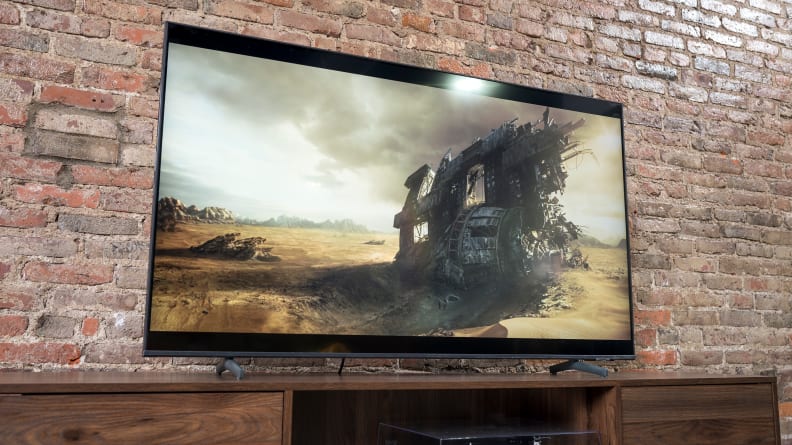
The Samsung Q60A (seen here) gets bright enough for HDR to pop, but if your living room gets a good amount of natural and/or artificial light, the 6-Series' added brightness will go a long way.
The Q60A and the 6-Series offer terrific performance bolstered by impressive display technology. Both feature quantum-dot color, which is partially responsible for their impressive color production. Both TVs offer deep, inky black levels (around 0.05 to 0.09 nits, to be precise), and both get bright enough in every picture mode to make HDR content truly shine.
But the TCL 6-Series does a better job saturating HDR color (96% DCI-P3 versus 89.4% on the Q60A), and when it comes to brightness, the 6-Series is the better choice for rooms with more ambient lighting. While the Q60A outputs a respectable peak brightness level of around 430 nits in its most accurate picture mode, the 6-Series is capable of HDR brightness in the 600- to 900-nit range in its most accurate picture mode.
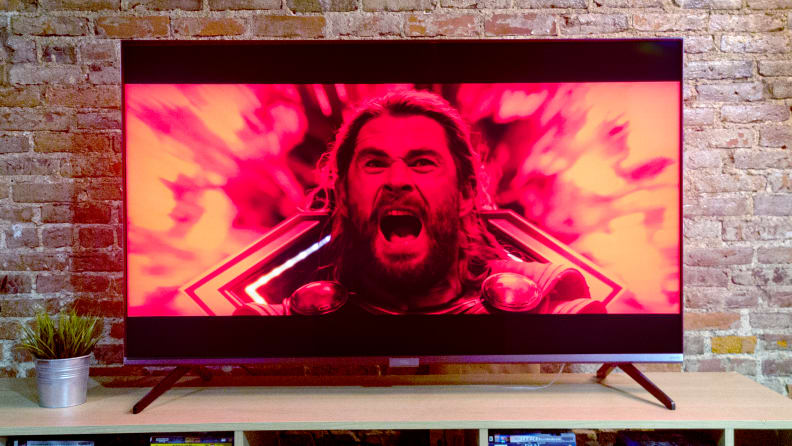
The 6-Series (seen here) covers a higher percentage of the HDR color gamut (DCI-P3) than the Samsung Q60A.
Standard Dynamic Range (SDR) content—that is, the majority of what you’ll watch on cable TV and streaming platforms—tells a similar story. The Q60A’s SDR brightness hovers at around 200 to 300 nits, depending on what’s on screen. We clocked the 6-Series’ SDR brightness between 400 to 500 nits on average. This means that the 6-Series is not only brighter across all types of content, but it’s also better equipped to deliver a more noticeably impressive picture while watching something mastered for HDR. In other words, you’ll have an easier time telling the difference between SDR and HDR content on the 6-Series.
Once you factor in the 6-Series’ additional features—Dolby Vision support, 120Hz refresh rate, and Variable Refresh Rate—it’s clear that the 6-Series is the better performer of the two. Make no mistake: Samsung’s Q60A is no slouch. But in a head-to-head matchup, TCL’s 6-Series takes home the ribbon.
Our pick: TCL 6-Series
And the winner is…
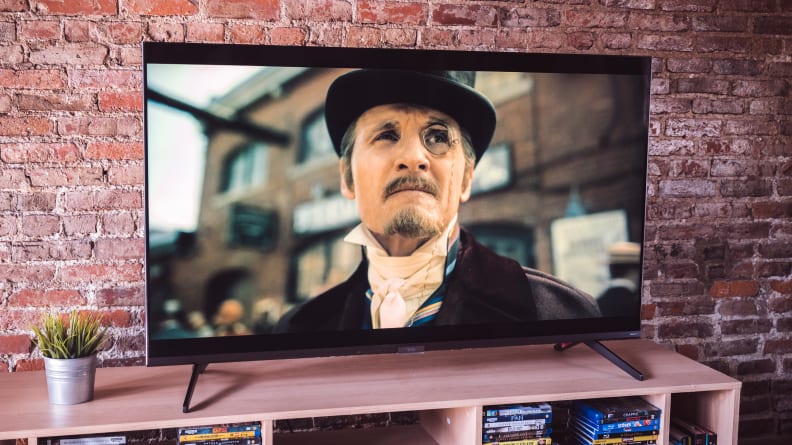
Based on its overall performance, its easy-to-use smart platform, and its future-facing features, our pick is the TCL 6-Series (seen here).
While both of these TVs would make wonderful additions to anyone’s home theater setup, the TCL 6-Series is the better choice for picture purists, gamers, and folks who are seeking a simplified (but flexible) smart platform experience.
The Samsung Q60A is a great pick, too—it’s more affordable than the 6-Series across the board and there are five more size options to choose from, including a modest 43-inch model that would work out well in smaller rooms. Additionally, the Q60A offers a more stylish design, with a posh, simplistic exterior and a forward-thinking remote control that eliminates the need for disposable batteries.
Our choice—the 6-Series—comes down to its performance, its features, and its inclusion of our favorite smart platform, Roku TV. If you don’t need the extra gaming enhancements and prefer the premium feel of a Samsung-branded TV, you’ll likely appreciate everything the Q60A has to offer.
Buy the TCL 6-Series at Best Buy
Buy the Samsung Q60A at Best Buy
